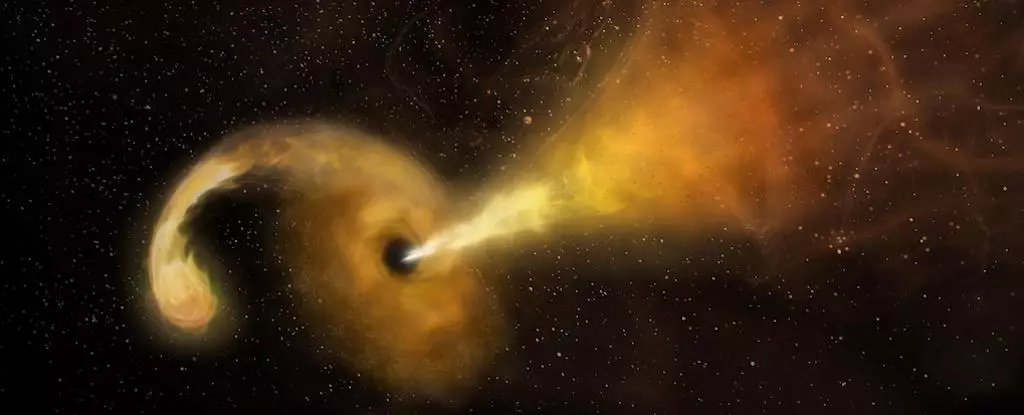In the vast expanse of the universe, where cosmic phenomena frequently baffle astronomers, a newly observed event stands out as both astonishing and perplexing. Designated as EP240408a, this unusual cosmic explosion was first identified by the Einstein Probe, an advanced X-ray space observatory, on April 8, 2024. While initial observations seemed to categorize it within the realm of gamma-ray bursts, further scrutiny revealed that it doesn’t conform neatly to any one type of celestial occurrence known to scientists. This enigmatic event could either be a rare alignment of common stellar interactions or herald the emergence of a previously unseen astrophysical occurrence.
Upon its detection, a collaborative effort of multiple ground-based and space telescopes stepped in to analyze EP240408a across an array of wavelengths, including ultraviolet, optical, near-infrared, radio, and gamma rays. This unprecedented multi-wavelength observational campaign combined the capabilities of instruments like NuSTAR, Swift, Gemini, Keck, and the Very Large Array (VLA). The analysis of this robust dataset unveiled properties of EP240408a that intensified the mystery surrounding it.
The event exhibited an unusual flare in soft X-rays that lasted about ten seconds, transitioned into a four-day plateau, and then faded swiftly within another day. These temporal characteristics set it apart from typical gamma-ray bursts, which usually flare up for a matter of hours. Furthermore, glaring discrepancies arose regarding the X-ray brightness—too intense for known events yet too dim for others. Notably, despite several attempts to detect radio emissions from this source in the days and months following its outburst, telescopes reported nada. Such radio silence from an otherwise luminous event signals an inconsistency that only fuels curiosity.
Brendan O’Connor, an astronomer at Carnegie Mellon University and lead author of the recent study on EP240408a, elaborates that while the event shares characteristics with multiple phenomena, it fails to adequately explain any single category. After discarding concepts such as quasars and fast blue optical transients, researchers proposed a leading hypothesis: that EP240408a represents a tidal disruption event (TDE). These events occur when a black hole disrupts a star, resulting in spectacular flares of light as the star’s material is consumed.
However, this proposed scenario raises additional questions. Typically, TDEs emit substantial radio signals as jet material is ejected at high speeds. The absence of such emissions signals a need for further investigation into the nature of EP240408a. The most compelling conjecture suggests that radio emissions may take considerable time to emerge; prior research indicates that it can take hundreds to thousands of days for the slowed jet material to produce detectable signals. Thus, astronomers remain watchful, anticipating future observations that might establish or refute the hypothesis.
The Implications of EP240408a
As the universe continues to reveal its many mysteries, EP240408a stands as a potential key to unlocking new understanding of cosmic phenomena. If subsequent measurements unveil radio emissions from this event, it could provide critical validation for the tidal disruption theory and our understanding of intermediate-mass black holes. Conversely, if EP240408a continues to remain silent, it may necessitate a re-evaluation of our existing categories of cosmic explosions, possibly leading to the discovery of an entirely new type of astrophysical event.
The implications extend beyond mere categorization; they touch upon the very fabric of our understanding regarding how celestial forces interact. Each event serves as a reminder of how much we have yet to learn about the cosmos, reinforcing the notion that the universe operates according to rules that are often foreign to our comprehension.
EP240408a serves as a quintessential representation of the wonders and enigmas of the universe. As astronomers continue to observe and interpret data from this mysterious explosion, it encapsulates the essence of scientific inquiry—curiosity, skepticism, and the pursuit of knowledge. Whether this event reaffirms established theories or ushers in the dawn of new discoveries, it undeniably contributes to the grandeur of our cosmic tapestry, urging us to look deeper into the night sky and question the very nature of the universe. As we stand on the precipice of potential discovery, EP240408a might just be a harbinger of greater revelations yet to come.

